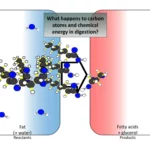Dive into the fascinating world of [doculax](https://www.lolaapp.com/doculax) and unravel the complexities of [discontinuous measurement ABA](https://www.lolaapp.com/discontinuous-measurement-aba) alongside our exploration of dereification.
Deconstructing Reality: What is Dereification?
Dereification is a powerful concept that can reshape our understanding of the world. It’s like realizing the world isn’t built with solid, unchanging blocks, but rather with interconnected, fluid elements, always in motion. It involves recognizing that many things we perceive as fixed and independent are actually shaped by relationships, situations, and our own perspectives. Think of it as “un-thinging” the world—a way of looking deeper to understand that things aren’t always what they seem.
Imagine a rainbow. We might say, “Look at that rainbow!” as if it’s a tangible object. However, a rainbow is simply light refracted through water droplets. It’s a process, dependent on specific conditions and our viewpoint. This is dereification in action—recognizing the dynamic process behind what appears to be a static object.
Another example is the concept of “success.” We often treat it as a single, definable achievement, like a big house or a high-paying job. But “success” is subjective, varying from person to person. Dereifying “success” means understanding that it’s a personal and evolving concept, not a universal standard.
Even deeply ingrained concepts like gender roles can be dereified. While they may seem fixed, these roles are actually socially constructed, changing across cultures and over time. This suggests they are products of our environment, not inherent traits. Dereification helps us see these roles as flexible and influenced by social forces.
Dereification Examples: Seeing the World Differently
Thinking about dereification can be challenging. It’s like trying to grasp something intangible. These examples illustrate how it works:
- Social Constructs: Gender roles are often treated as fixed rules, but they are actually social agreements that evolve. Dereifying them allows us to see them as flexible and open to change.
- Abstract Ideas: “Success” is often reified as a specific achievement. Dereifying it helps us define it on our own terms.
- Systems: The “economy” is often spoken of as a tangible entity, but it’s a complex network of interactions. Dereifying it reveals how individual actions contribute to the larger system.
| Concept | Reified View | Dereified View |
|---|---|---|
| Gender Roles | Fixed and predetermined by biology | Socially constructed and subject to change |
| Success | Material possessions and external validation | Personal fulfillment and individual definition |
| The Economy | Independent entity operating outside our control | A complex system influenced by collective human behavior |
| Self-Identity | A fixed and unchanging entity | A fluid and evolving process shaped by experience and reflection |
| Mental Health | A state of either “well” or “ill” | A spectrum of experiences influenced by multiple factors |
Why is Dereification Important?
Dereification may not solve every problem, but it offers powerful benefits:
- Flexibility and Adaptability: Seeing things as less rigid makes us more adaptable to change.
- Enhanced Critical Thinking: Dereification promotes questioning assumptions and looking beyond the surface.
- Greater Empathy: Recognizing that perspectives are shaped by experiences fosters empathy and understanding.
- Creativity and Innovation: Dismantling fixed ideas opens up space for new possibilities.
| Benefit of Dereification | Description |
|---|---|
| Flexibility | Adjusting to new situations and ideas more easily. |
| Critical Thinking | Evaluating information and beliefs objectively and skeptically, questioning underlying assumptions. This helps you make informed decisions. |
| Empathy | Understanding and sharing the feelings of others, recognizing their unique perspectives. This fosters compassion and connection. |
| Creativity & Innovation | Generating novel ideas and solutions, thinking outside traditional categories. When you question assumptions, you open your mind to new possibilities. |
Practicing Dereification: A Step-by-Step Guide
Practicing dereification is a gradual process. Here are some suggestions:
Step 1: Cultivate Mindfulness: Pay attention to your thoughts and language. Notice when you’re treating abstract concepts as concrete things.
Step 2: Question Assumptions: Challenge your beliefs. Ask yourself, “Why do I believe this? Are there other perspectives?”
Step 3: Consider Context: Meaning is context-dependent. What’s true in one situation might not be true in another.
Step 4: Embrace Uncertainty: Be comfortable with not knowing. The world is complex, and some things may never have definitive answers.
Dereification is an ongoing journey. Current research suggests our understanding of how the brain constructs and deconstructs concepts is still evolving. There’s much we don’t know, but dereification likely offers a valuable tool for navigating life’s complexities. Some theories even suggest that the ability to dereify is a key aspect of psychological flexibility, potentially contributing to resilience. While further research is needed, it’s clear that dereification can help us approach challenges with fresh perspectives.
Dereification in Detail: Unmasking Hidden Assumptions
Dereification is about recognizing that many “things” we perceive as solid and separate are actually fluid and interconnected processes. It’s about questioning assumptions and acknowledging the influence of context and perspective.
Think about the concept of “self.” We often think of ourselves as fixed and unchanging individuals. But our sense of self is constantly evolving, shaped by our experiences and interactions. Dereifying the “self” means recognizing this fluidity and understanding that who we are is not a static entity but an ongoing process.
Similarly, concepts like “emotions,” “relationships,” and even “time” can be dereified. While we experience them as real, they are also constructs of our minds, shaped by our cultural and personal contexts. Dereification encourages us to see beyond these constructs and understand the underlying processes at play.
The Benefits of Dereification
The benefits of dereification extend beyond intellectual understanding. It can have a profound impact on our well-being and how we interact with the world:
- Increased open-mindedness: Dereification encourages us to question our assumptions and consider alternative perspectives. This can lead to greater tolerance and understanding of others.
- Improved emotional regulation: By recognizing that emotions are not fixed entities but rather fluid processes, we can develop more effective strategies for managing difficult emotions.
- Enhanced creativity and problem-solving: Dereification can help us break free from rigid thinking patterns and find innovative solutions to challenges.
How to Practice Dereification
Cultivating mindfulness is crucial for practicing dereification. By paying attention to our thoughts and language, we can become more aware of when we are reifying concepts. This awareness is the first step towards deconstructing those reified perceptions.
Questioning our assumptions is another key element. When we find ourselves treating a concept as a fixed reality, we can ask ourselves: “Is this really true? What evidence supports this belief? Are there other ways of looking at this?”
It’s also important to recognize the role of context. What may be true in one situation may not be true in another. By considering the context in which a concept is being used, we can avoid making generalizations and appreciate the nuances of meaning.
Finally, embracing uncertainty is essential for dereification. The world is complex, and not everything can be neatly categorized or explained. Being comfortable with ambiguity allows us to remain open to new information and perspectives.
Current research in psychology and cognitive science continues to explore the implications of dereification for well-being. Some studies suggest a correlation between dereification practices and increased mental flexibility. However, it’s important to acknowledge the limitations of current knowledge and avoid presenting these findings as definitive.
Reification in Buddhism: Unraveling the Illusion of Self
In Buddhism, reification is a central concept related to the nature of reality and the path to enlightenment. It refers to the tendency to perceive concepts and mental constructs as concrete, independent entities, when in reality, they are fluid and interconnected.
A key example of reification in Buddhism is the concept of “self.” We often cling to the idea of a permanent, unchanging self, but Buddhist teachings emphasize the impermanent and interconnected nature of all phenomena, including the self. This illusion of a separate self is seen as a source of suffering because it leads to attachment, aversion, and delusion.
The Path to Dereification in Buddhism
Buddhist practices aim to deconstruct reified perceptions and reveal the true nature of reality. Mindfulness meditation, for instance, helps us observe our thoughts and emotions without judgment, recognizing their impermanent and ever-changing nature. This practice can gradually weaken our attachment to the idea of a solid self.
The concept of emptiness (sunyata) in Mahayana Buddhism is also crucial for understanding dereification. Emptiness doesn’t imply that nothing exists, but rather that things lack inherent, independent existence. They exist in relation to other things, arising and ceasing due to various causes and conditions. This understanding challenges our reified perceptions and opens us to the interconnectedness of all things.
Dereification and Liberation
In Buddhism, dereification is not merely an intellectual exercise; it’s a transformative practice that can lead to liberation from suffering. By deconstructing the illusion of a separate self and recognizing the impermanent and interconnected nature of reality, we can cultivate greater peace, compassion, and wisdom.
While some Buddhist traditions may present these ideas with certainty, it’s important to note that different schools of thought within Buddhism can have varying interpretations. Ongoing research continues to explore the nuances of these concepts and their implications for well-being. For example, some studies explore the potential benefits of mindfulness meditation for reducing reification and promoting psychological flexibility. However, further research is needed to fully understand these complex relationships. It’s always beneficial to explore different perspectives and find what resonates most with you.
- Star Ring Trends: Etsy vs Amazon - March 28, 2025
- Boost Pollinator Habitats: Baby Blue Eyes Sustainable Farming Guide - March 28, 2025
- Protect Big Black Bears: Effective Conservation Strategies - March 28, 2025

















4 thoughts on “Understanding Dereification: A Practical Guide to Deconstructing Reality”
Comments are closed.